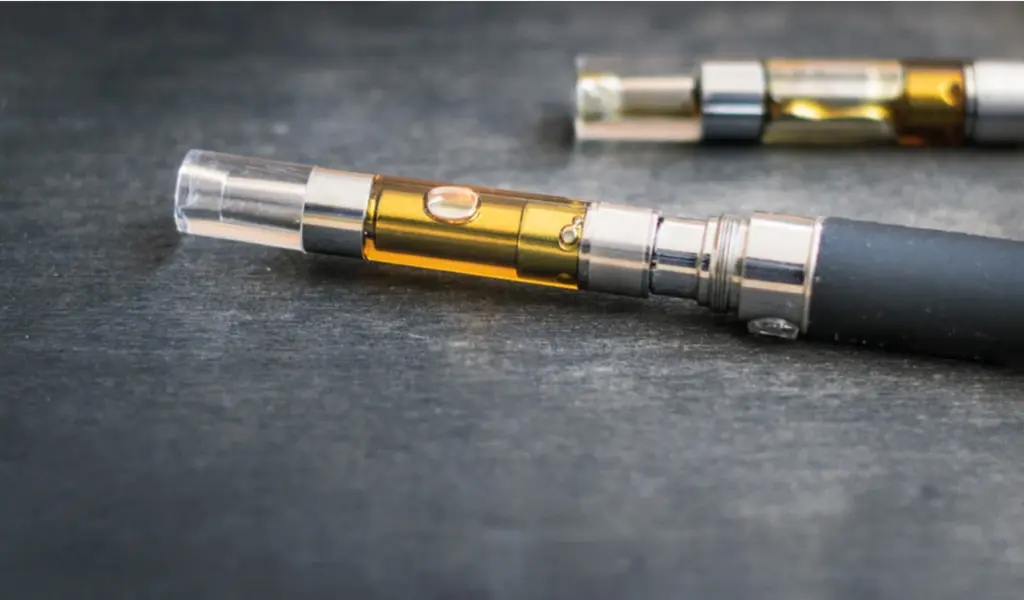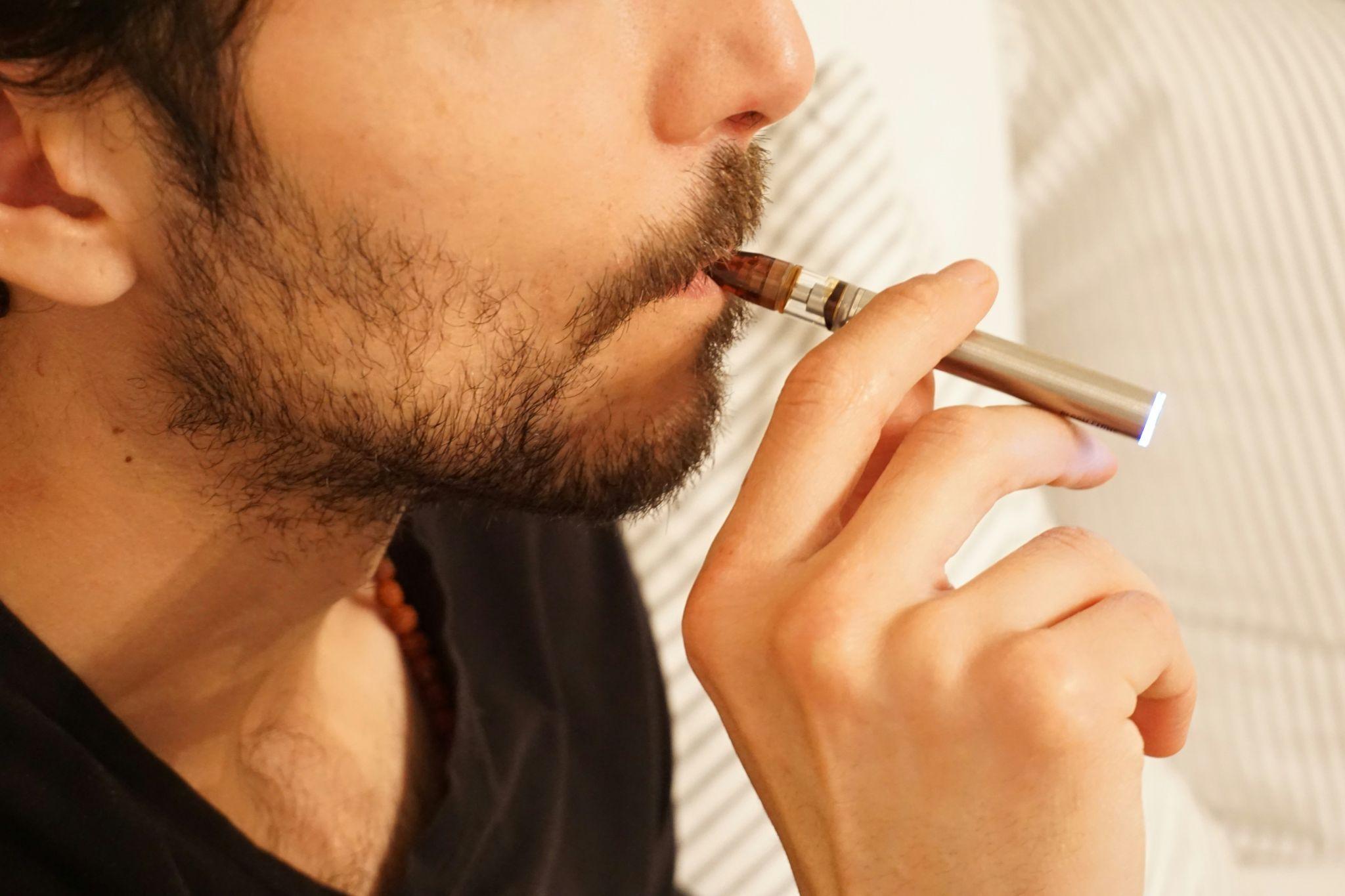Health
Delta 8 Carts vs. Delta 8 Disposable Vapes: Which is Right for You?

Delta 8 has been gaining increasing attention for its psychoactive properties, providing a milder high compared to delta 9 THC, the main form of THC found in cannabis. This makes it an appealing option for those who prefer a less intense experience.
While it’s popular in many of its forms, delta 8 carts and disposable vapes are particularly interesting to cannabis consumers. But what are the differences between these two types of delta 8 products? And more importantly, which one is right for you?
What is Delta 8?
Delta 8 THC is a cannabinoid found in the cannabis plant that has grown in popularity due to its unique psychoactive properties.
Chemically similar to delta 9 THC—the most commonly known form of THC and the main psychoactive component in marijuana—delta 8 offers a slightly milder high, which many users prefer.
It typically induces a more clear-headed experience compared to delta 9, potentially accompanied by less anxiety and paranoia, which are sometimes associated with the more potent forms of THC.
The effects of delta 8 can include a sense of calm, uplifted mood, and an increase in appetite, mirroring many of the therapeutic effects of traditional THC but with a lower risk of negative side effects. Its potency is generally perceived to be about 50% that of delta 9 THC, making it an appealing option for those who find the latter to be overwhelmingly strong.

Understanding the Basics: Delta 8 Carts vs. Delta 8 Disposables
Delta 8 carts, short for cartridges, are containers of vape juice that contain a mix of delta 8 oil and other ingredients such as terpenes for flavor.
These carts are designed to be used with a reusable battery that heats the oil in the cart, producing a vapor that can be inhaled. Delta 8 carts are known for their potency and ability to deliver a quick onset of effects.
One of the main benefits of using delta 8 carts is the variety they offer. Consumers can choose from a wide range of flavors and strains, each providing a different experience. Additionally, these carts come in various concentrations, allowing users to control the intensity of their intake.
Delta 8 disposable vapes are similar to carts but are intended for single use. Once the delta 8 oil inside is depleted, the entire device is discarded. These vapes are extremely popular among casual users and those new to cannabis because they require no prior knowledge or additional equipment to use.
The key advantage of disposable vapes is their convenience. There is no need to switch out carts or worry about charging batteries – everything is ready to go from the moment of purchase.
This makes disposables an excellent option for events, trips, or any situation where you might not want to carry extra gear.
Delta 8 Carts vs. Disposables: Pros and Cons Analysis
Advantages of Delta 8 Carts:
- Versatility and Variety: The ability to switch out cartridges on a single battery allows users to try different strains and flavors without committing to a large quantity of any one product.
- Cost-Effective in the Long Run: Although the initial setup with a battery and cart can be pricier, the cost per use tends to be lower with carts since only the cartridge needs to be replaced once it’s depleted.
- Control Over Dosage: Adjustable settings on the vape pen give users more control over how much THC they are consuming in each puff, which can be particularly beneficial for managing dosage for medical use.
Disadvantages of Delta 8 Carts
- Upfront Investment Required: The need to purchase a battery and a cartridge separately can be a barrier for new users.
- Maintenance and Cleaning: Keeping a vape pen in good working condition requires regular cleaning and occasional part replacements, which might not appeal to everyone.
Advantages of Delta 8 Disposable Vapes:
- Ultimate Convenience: No cleaning, charging, or maintenance is necessary; use the vape until it runs out and then dispose of it.
- Ease of Use: There is no learning curve involved with disposables. They are the simplest way to vape delta 8, making them ideal for beginners.
- Portability: Their small size and lack of separate parts make disposable vapes easy to carry and use discreetly, almost anywhere.
Disadvantages of Delta 8 Disposable Vapes:
- Higher Cost Over Time: While individual disposables might be cheaper upfront, the cost can accumulate quickly for frequent users since each unit must be completely replaced after use.
- Limited Customization: Unlike carts, disposables do not allow for strain or flavor changes once they are purchased. This lack of flexibility can be frustrating for some users.
- Environmental Impact: The throw-away nature of disposable vapes generates more waste compared to reusable options, which is a consideration for environmentally conscious consumers.

Usage and Maintenance
Using delta 8 carts involves a few simple steps: charge the vape pen battery, screw on the cart, and you’re ready to inhale.
However, to ensure the best experience and longevity of the device, regular maintenance is crucial. This typically involves cleaning the connection between the cart and the battery and ensuring no residue is clogging the heating element.
These tasks, while not particularly difficult, do require a commitment to routine care.
Disposable vapes, on the other hand, need no preparation or maintenance. They are designed to be used straight out of the box and are disposed of once depleted.
This makes them incredibly user-friendly but also means they offer no opportunity for upkeep or customization. The simplicity of disposables is one of their biggest selling points, allowing users to enjoy delta 8 without worrying about technical issues or upkeep.
Performance and Quality
Delta 8 carts tend to provide a more consistent performance throughout their use. The quality of vapor and the purity of the THC can be better maintained in these systems, especially in those that allow temperature control.
This is particularly important for users who prefer a consistent strength and flavor from their vape.
While convenient, disposable vapes can suffer from decreased performance as the battery starts to wane. This might lead to a less satisfying experience towards the end of the vape’s life, with weaker vapor production and a diminished flavor profile.

Cost-Effectiveness
Though the initial cost is higher, delta 8 carts are generally more cost-effective over time. They offer lower ongoing costs since only the oil cartridge needs to be replaced. This model can be particularly economical for regular users.
Disposables, while cheaper upfront, may become more costly over time due to the need for complete replacements with each purchase. This can add up, especially for frequent users, making disposables less cost-effective in the long run.
Delta 8 Carts vs. Delta 8 Disposables: Which is Best?
Choosing between delta 8 carts and disposable vapes involves considering factors such as cost, convenience, and the amount of maintenance you are willing to undertake.
Carts offer greater flexibility and are more cost-effective in the long run, but they require a bit more knowledge and upkeep. Disposables offer unparalleled convenience and ease of use, though at a higher cost over time and with more waste.
Only you can decide which type of delta 8 vape is right for you. Are you willing to pay more for the convenience of a disposable, or are you willing to do some light upkeep for the variety and quality of a cart?
That’s up to you to decide. However you choose to use delta 8, just know this: you’re in for a fun, mild, mellow ride!
SEE ALSO: Wellhealth How to Build Muscle Tag: Gym Trainer Guide

Health
Report Causes Pfizer Stock to Climb Approximately $1 Billion Acquired by Starboard

(VOR News) – According to a rumor that activist investor Pfizer Starboard Value has taken a holding in the struggling pharmaceutical business that is expected to be worth around one billion dollars, the stock of Pfizer (PFE) is on the increase in premarket trading on Monday.
This comes after the report was made public. The report was made available to the general public following this. Starboard Value was successful in moving forward with the acquisition of the position.
Starboard is said to have approached Ian Read, a former chief executive officer of Pfizer, and Frank D’Amelio, a former chief financial officer, in order to seek assistance with its goals of boosting the performance of the company, according to the Wall Street Journal. Read and D’Amelio are both former Pfizer executives.
The purpose of this is to facilitate the accomplishment of its objectives, which include enhancing the overall performance of the firm.
In their previous jobs, D’Amelio and Read were chief financial officers.
It is stated in the report that the hedge fund is of the opinion that Pfizer, which is currently being managed by Albert Bourla, who succeeded Read as Chief Executive Officer (CEO) in 2019, does not demonstrate the same level of mergers and acquisitions (M&A) discipline that Read did. Bourla took over for Read in 2019. Read was succeeded by Bourla in the year 2019.
Pfizer, a multinational pharmaceutical conglomerate, has made substantial investments in the acquisition of more companies that are involved in the research and development of cancer medicines.
These businesses have been acquired for billions of dollars. The biotechnology company Seagen, which was acquired by Pfizer in the previous year for a price of $43 billion, is included in this category. One of the businesses that can be classified as belonging to this category is Seagen.
In spite of the fact that the S&P 500 Index experienced a 21% increase in 2024.
No major trading occurred in Pfizer stock that year.
Due to the fact that the demand for Pfizer’s COVID-19 vaccines fell after the firm reached its pandemic peak in 2021, the share price of the corporation has decreased by over fifty percent since that time.
This drop has occurred ever since the company’s shares reached their maximum peak, which was during the time that this decline occurred. Not only have they not changed at all, but they have also remained essentially stable. This is in contrast to the S&P 500, which has gained 21% since the beginning of this year.
Recently, the corporation was forced to take a hit when it decided to recall all of the sickle cell illness medications that it had distributed all over the world.
Fears that the prescription could lead patients to experience severe agony and possibly even death were the impetus for the decision to recall the product. In spite of the fact that Pfizer’s stock is increasing by almost three percent as a result of the news that followed the company’s decision, this is the circumstance that has come about.
SOURCE: IPN
SEE ALSO:
New Study Reveals Drinking Soda Pop Increases the Risk of Stroke
The Mpox Vaccine’s Protection Decreases Within a Year; Booster Requirements
Health
New Study Reveals Drinking Soda Pop Increases the Risk of Stroke

A recent report from global research indicates that excessive consumption of coffee or soda pop is associated with an increased risk of stroke, although the intake of black and green tea is correlated with a reduced risk. Excessive consumption of soda pop or coffee warrants caution!
Recent research indicates that it may substantially elevate the risk of stroke.
Consuming four cups of coffee daily elevates the risk of stroke, according to studies, although ingesting 3-4 cups of black or green tea daily typically offers protection against stroke. Additionally, consume more coffee; it may reduce your risk of mortality.
Recent findings from global research studies co-led by the University of Galway and McMaster University, alongside an international consortium of stroke researchers, indicate that soda, encompassing both sugar-sweetened and artificially sweetened variants such as diet or zero sugar, is associated with a 22 percent heightened risk of stroke. The risk escalated significantly with the consumption of two or more of these beverages daily.
Stroke Risk Fizzy Drinks and Soda Pop
The correlation between fizzy drinks consumption and stroke risk was most pronounced in Europe, the Middle East, Africa, and South America. Women exhibit the most elevated risk of stroke from bleeding (intracranial hemorrhage) associated with fruit juice beverages. Consuming over 7 cups of water daily diminishes the likelihood of stroke due to a clot.
Researchers observed that numerous items advertised as fruit juice are derived from concentrates and have added sugars and preservatives, potentially negating the advantages often associated with fresh fruit and instead elevating stroke risk.
Fruit juice beverages were associated with a 37 percent heightened risk of stroke resulting from bleeding (intracranial hemorrhage). Consuming two of these beverages daily increases the risk thrice.
Consuming over four cups of coffee daily elevates the risk of stroke by 37 percent, although lower consumption levels do not correlate with stroke risk. Conversely, tea consumption was associated with an 18-20 percent reduction in stroke risk. Additionally, consuming 3-4 cups daily of black tea, such as Breakfast and Earl Grey varieties, excluding green and herbal teas, was associated with a 29 percent reduced risk of stroke.
Consuming 3-4 cups of green tea daily was associated with a 27 percent reduction in stroke risk. Notably, the addition of milk may diminish or inhibit the advantageous effects of antioxidants present in tea. The lower risk of stroke associated with tea consumption was negated for individuals who added milk.
Disclaimer: This article is intended solely for informational reasons and should not be considered a replacement for professional medical counsel. Consistently consult your physician regarding any inquiries pertaining to a medical problem.
Related News:
Starbucks Faces Sales Decline Amid Price Fatigue and Rising Competition
Starbucks Faces Sales Decline Amid Price Fatigue and Rising Competition
Health
Following a Diagnosis of Breast Cancer, What Else Should You Know?

(VOR News) – Even though breast cancer affects one in eight American women, receiving a diagnosis can make a woman feel isolated.
Experts in breast cancer from the American College of Physicians (ACS) advise patients on how to manage their disease so that they may better cope with this awful information.
First, the kind and stage of breast cancer dictates the course of your care.
In addition to immunotherapy and chemotherapy, there are various surgical options available for the treatment of breast cancer.
Women of African descent are disproportionately affected by triple-negative breast cancer, an extremely aggressive form of the disease that has never proven easy to treat.
According to the American Cancer Society, pembrolizumab (Keytruda), an immunotherapy, has been shown to be helpful when combined with chemotherapy and is currently the recommended course of treatment for certain combinations of triple-negative breast cancer.
In her presentation, Dr. Katharine Yao said, “It’s really important that the patient and physician discuss the patient’s preferences and values when deciding what type of treatment to pursue and that they have an honest, individualized discussion with their care team.”
She is currently responsible for developing breast cancer treatment recommendations for more than 575 hospitals and institutions nationwide in her role as chair of the American College of Surgeons’ National Accreditation Program for Breast Institutions (NAPBC).
Yao, vice chair of research at Endeavor Health NorthShore Hospitals in New York, pointed out that each decision made about a patient’s treatment plan should take her preferences and diagnosis into consideration.
She ought to think about whether she would prefer a mastectomy—a surgical procedure that involves removing the entire breast with or without reconstruction—or a lumpectomy, which involves a surgical procedure that spares part of the breast tissue.
She stated that “the breast cancer you have may be very different from the breast cancer you hear about in your neighbor, colleague, or friend” in a press release issued by the American Cancer Society (ACS).
“Consider that while discussing breast cancer with others.”
Throughout your journey, it is critical that you look after your emotional health because having breast cancer may have a detrimental impact on your mental health.
“Getting a cancer diagnosis does not mean that everything in your life stops to be normal.” Director of the Fellowship in the Diseases of the Breast program at the Winthrop P. Rockefeller Cancer Institute at the University of Arkansas and state head of the American Cancer Society Commission on Cancer for Arkansas, Dr. Daniela Ochoa She thinks adding the burden of a cancer diagnosis and treatment to all the other pressures in life may be taxing.
“Managing stress and emotional health is vital component of a treatment plan.”
Ochoa recommends clinically trained psychologists and social workers who have assisted people in coping with cancer to anyone receiving treatment. Learning coping techniques might also be facilitated by joining cancer support groups or cancer wellness initiatives.
Breast cancer specialists say your care team is crucial.
The American Cancer Society (ACS) defines comprehensive care as having support at every stage of the procedure from surgeons, oncologists, patient navigators, nurses, social workers, psychologists, and other specialists.
After receiving a breast cancer diagnosis, women should see a surgeon or medical oncologist to explore their options; nevertheless, treatment shouldn’t be discontinued after just one appointment or after surgery is over.
Additionally, you can ask trustworthy friends or family members to accompany you to appointments and aid you with research or notes. They could serve as a network of support for you.
Yao stated in his talk that “one of the most important things is that patients should search out a team they have confidence in, that they trust will have their back when they need it, and a team they feel they can get access to and that will help them when they are in need.”
SOURCE: MP
SEE ALSO:
The Mpox Vaccine’s Protection Decreases Within a Year; Booster Requirements
COVID was a Paradigm Shift in Health Policymaking, Says Commissioner Stella Kyriakides.
Rwanda Reports 8 Deaths Linked To Ebola-Like Marburg Virus Days After It Declared An Outbreak
-

 News3 years ago
News3 years agoLet’s Know About Ultra High Net Worth Individual
-
Entertainment2 years ago
Mabelle Prior: The Voice of Hope, Resilience, and Diversity Inspiring Generations
-

 Health4 years ago
Health4 years agoHow Much Ivermectin Should You Take?
-

 Tech2 years ago
Tech2 years agoTop Forex Brokers of 2023: Reviews and Analysis for Successful Trading
-

 Lifestyles3 years ago
Lifestyles3 years agoAries Soulmate Signs
-

 Movies2 years ago
Movies2 years agoWhat Should I Do If Disney Plus Keeps Logging Me Out of TV?
-

 Health3 years ago
Health3 years agoCan I Buy Ivermectin Without A Prescription in the USA?
-

 Learning3 years ago
Learning3 years agoVirtual Numbers: What Are They For?